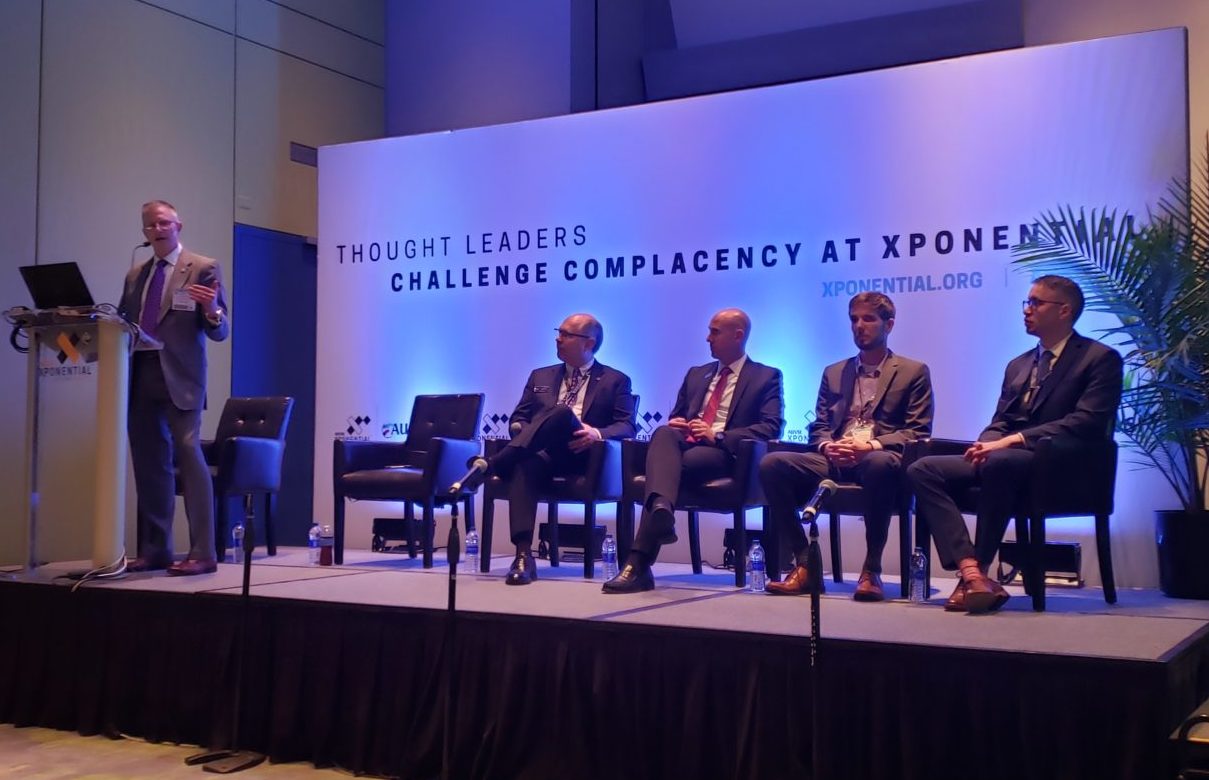
The IPP panel at AUVSI Xponential in Chicago. (Nick Zazulia/AVI)
It has been a year since the FAA launched its nation-wide UAS Integration Pilot Program with 10 teams around the country. What does its progress mean for the broader scope of rulemaking around unmanned aircraft going forward?
“If we don’t have something that is repeatable and scalable outside of the original ten, it’s not a success,” said Nicholas Flom, executive director for the Northern Plains UAS Test Site, speaking on an AUVSI Xponential 2019 panel featuring representatives from different IPP teams. While the initial operations being workable is a necessary step, Flom said, the program was always meant to be a testbed for procedures and rules that could be expanded out to the rest of the country.
Northern Plains in Grand Forks, North Dakota is the site of much unmanned testing by both government and industry, and as part of the IPP it is a partner with the state Department of Transportation and companies such as Airbus Americas, Echodyne, Harris and Collins Aerospace.
Kansas, which was also represented on the panel, is working with a host of companies including AirMap, Fortem, Harris, Microsoft, Garmin and uAvionix as well as local universities to tackle precision agriculture and long-line linear infrastructure inspection, which includes the need for beyond-visual-line-of-sight (BVLOS) flight. North Carolina’s trial comprises the transport or delivery of packages, food or medical blood work by drone — both BVLOS and over people. The city of San Diego’s Department of Homeland Security is a lead participant in California, where use cases include border patrol and supporting the police department.
While they communicate now, each participant team was selected with a unique group of partner companies and organizations, technology solutions and goals.
“BVLOS, what does this mean? Operations over people, operations over moving vehicles, how do I avoid cooperative and non-cooperative targets? At the simplest level, it doesn’t really make a difference how. We’re all coming at this with different technologies,” Flom said. “Eventually, we will see performance standards, we will have something that can be met, established, a tool created that can help somebody get that approval that is actually needed… We’re all contributing to that. That’s our give-back to the federal agencies.”
There are about 18 months remaining in the IPP, and the time is coming to figure out what that looks like; to make sure that the participants are thinking about repeatability and not just experimenting for its own sake. Judging by the representatives from North Dakota, Kansas and North Carolina — three of the ten sites — the teams have an appetite for that.
“We’re fairly nuts-and-bolts in terms of what’s actually useful,” in Kansas, said Bob Brock, director of aviation for the state’s Department of Transportation. ” [If] we have a temporary waiver for a 2-year period, does that give you something? … I think we need to be collectively challenging ourselves and challenging each other to say ‘Okay, you got that, is that helpful? Is that that much better than just [Part] 107 operations? Or, is that ‘We figured out how to do the paperwork for something that’s not that helpful in the long term’?
Brock said he hopes that before the IPP concludes there is a “forcing function” that demands accountability from the participants and ensures they are working toward the original goal of scalable, nation-wide unmanned operations rather than just “a nice administrative exercise.”